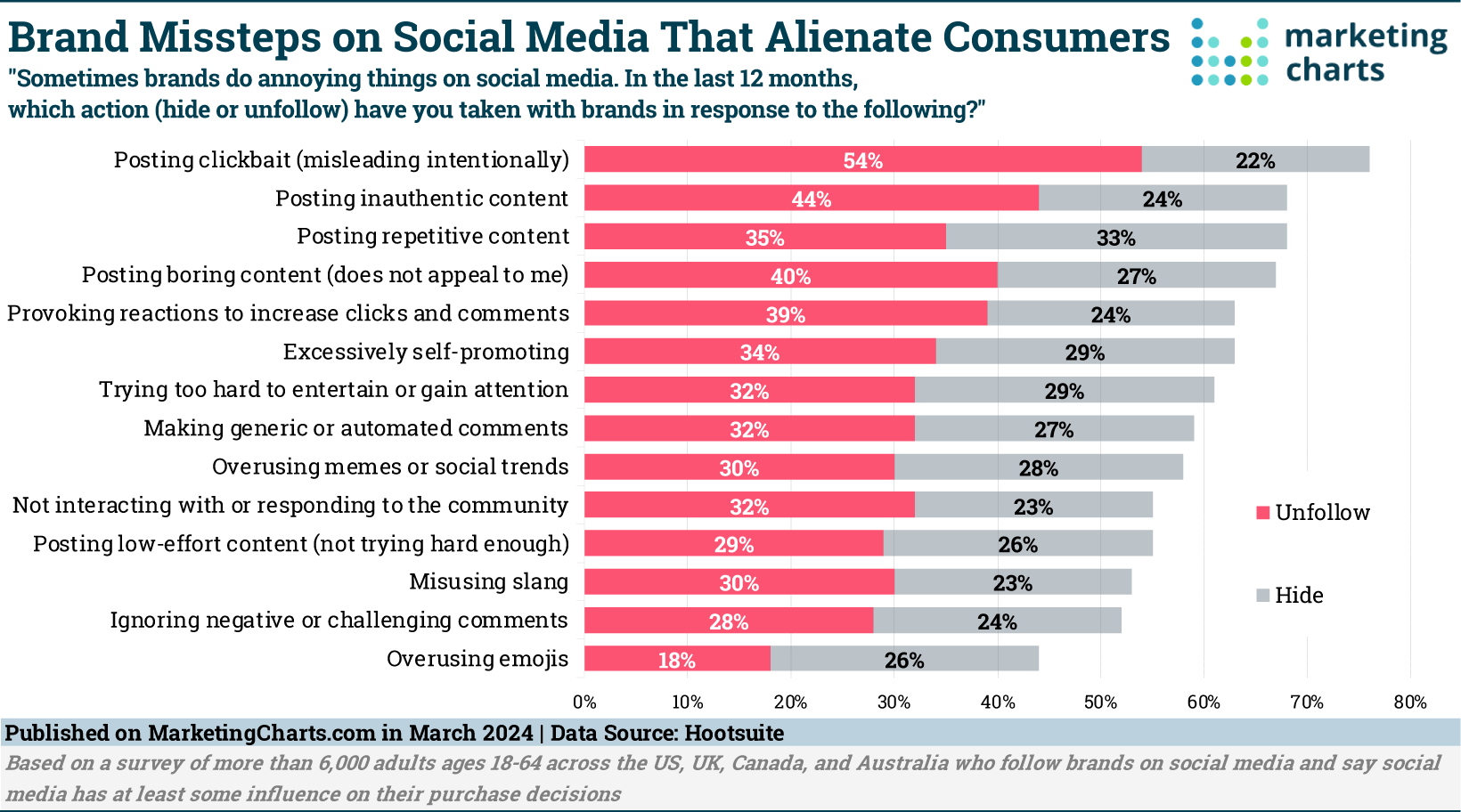
What Do Consumers Want from Brands on Social Media?
Some social media platforms are groeing as brand engagement destinations, and research from Hootsuite finds that this can be of great value to brands, as the decision to follow a brand on social media can have an impact on purchase behaviors.
In surveying more than 6,000 adults ages 18-64 across the US, UK, Canada, and Australia who follow brands on social media and say social media has at least some influence on their purchase decisions, the report reveals that for 58%, following a brand has a moderate to high impact on their purchase decisions. Moreover, 7 in 10 who follow brands on social media report having explicit plans to purchase from them (soon or in the future).
As such, brands need to be careful not to alienate their followers, and there are certain behaviors that they should avoid. The leading reason why respondents have unfollowed or hid a brand in the past 12 months is due to it posting clickbait (intentionally misleading content), as cited by 76%. That’s followed by posting inauthentic content (68%) – with authenticity a key quality desired from brands– as well as boring content (68%) and repetitive content (68%).
Previous research also indicates that brands should be wary of being too focused on self-promotion and of poor engagement with public comments or direct messages.
So what type of content should brands focus on? Most respondents said they don’t mind brand content in their feed if it tells or teaches them something new (56%) or makes them laugh (55%). Many (47%) are also accepting of content that inspires them.
Brands are also generally fine to jump into the fray surrounding cultural events, though not always. A slight majority (55%) said they like when brands join in the social media conversation during major sporting events, and close to half feel the same away about brands participating in the conversation around pop culture moments (47%) and unfolding news events (45%).
However, fewer than one-third (31%) like it when brands join the social media conversation about political events. Separate results show that the leading cultural area that people would rather brands stay away from is political policies.
That speaks to a certain desire for brands to stay in their lane, although not all cultural topics are off limits: few want brands to avoid posting about environmental concerns (12%), education practices (11%) and ethical business practices (10%). Still, those are not a core factor in brands’ appeal to consumers. When deciding to follow a brand, the aspect of their social media presence that’s most appealing is communicating in a relatable and authentic way. Having interesting things to say about the world beyond their products or services is second-last on the list of 8 elements.
There are some notable generational differences in the aspects of a brand’s social media presence that appeal to consumers. While relatable and authentic communication is the most important to both Baby Boomers and Gen Zers, the next-most important for Gen Zers is having good vibes or a visual aesthetic that they’re into. (This was 6th on the list for Baby Boomers.) Gen Zers find less appeal than Baby Boomers from brands posting content that inspires them, and are relatively more interested in brands making an effort to say or do things creatively or in an entertaining way.
Full article: https://www.marketingcharts.com/digital/social-media-232558?mc_cid=e68dc16205&mc_eid=7ae3dee024
